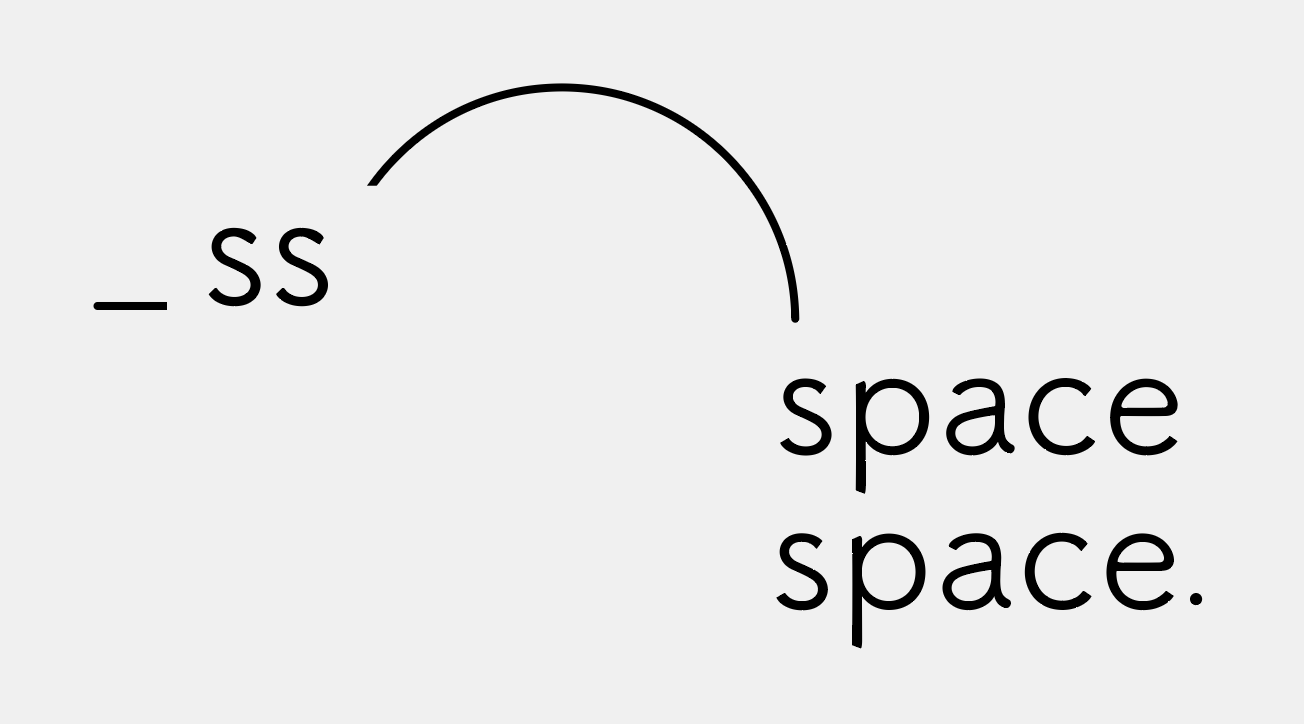
‘Now we sit, like Renaissance princesses in front of a painting, looking at a flat surface but seeing a whole world beyond.’
Clare Burnett
Fragments of Space
words by Clare Burnett
in May 2021
I’ve been thinking, this year, about how much our perception of space can contract and expand according to what we feel might be possible. I started the year with dreams of residencies and travel in countries I had never visited. I returned from Mexico in February 2020 and since then have woken in the same bed, to the same view, every day. The space around me has been shrink wrapped – my house, garden, studio, a deserted shopping arcade with the music still playing; empty tube trains; faces wrapped and hidden.
In my street I made small interventions – traffic-cones across the road to turn the cars around; chalk on each doorstep; cars parked in the next door street; guerrilla gardening. What small changes can we make to change how we use a space?
I sprained my ankle. Suddenly all I noticed in the street was people limping. We spend our days filtering and focussing. Do we notice the growth in CCTV cameras; amazon video door bells; road signs; car colours or do we only see what we want to see? If we see everything do we experience a sensory overload? Do our minds subconsciously manage just what can cope with?
In Vivien Lovell’s talk at the Royal Society of Sculptor’s public art symposium this month, she talked about how sculptures can be Space Invadors or Place Makers. Wonderful work is made in both categories but the strongest reactions are to the Space Invadors, sculptures that appear to make claim to a piece of public space ‘forever’ - Richard Serra’s ‘Tilted Arc’, the Chicago Picasso or more recently slave traders on plinths in the UK. Some stay and become loved, some are removed but all show how much the public cares about how their space is used.
In relation to the recent debate about whether monuments and statues should be labelled or removed, Bianca Bova’s question at the same symposium strikes at the core – “We are asking the wrong question,” she said, going on to explain that we shouldn’t be asking ‘Should it come down?’ but rather, is this the best we can do in this scarce commodity that is public space? The question opens up possibilities, allows for invention and change, stops us holding on too tight to what we already know. In Japan, according to Jiro Yoshida, economist at Penn University in a recent Freakanomics podcast ‘Why are Japanese Homes Disposable?’ half of all homes are demolished every 38 years. The podcast discusses this attitude to permanence, so different from the British concern (over-concern?) for heritage and preserving history at all costs.
Are cars moving sculptures? They have certainly been used by artists as objects and material – Damian Ortega’s Cosmic Thing, a deconstructed VW beetle, or John Chamberlain’s crushed car sculptures. But in the street they are so omnipresent it is hard to isolate them and see them anew. And they have become terribly boring, don’t you think? Looking out of my window now I only see grey, silver and black cars. A monochrome sea that entirely misses the possibilities of these kinetic objects. When will pinks and oranges return? Or maybe the cars will go completely to be replaced by self driving taxis which we call on demand; and with that the roads will widen and pedestrians and cyclists will take over the space and parking will become a historical phenomenon.
Meanwhile inside we sit looking at screens; looking in fact at a sheet of metal and plastic. At school I was taught a Eurocentric history of art - how paintings from the Renaissance onwards were windows onto a world. Dukes and Duchesses sat within the frame as their perspectival landscapes stretched out behind them. But as the 19th Century drew to a close this was challenged – the paintings were just paint, the surface was flat and the space became a shallow shimmer, no longer a window to look through into another world. But now here we are, looking again through windows to untold worlds beyond, looking into boxes, trapping all of our world within a series of rectangles. The space is just in our brain, for part of us must know the screen is flat and we cannot climb inside. Yet in 2019 Jeff Koons ‘made’ a sculpture and positioned it on a GPS location in Hyde Park. Visitors, arriving at the spot, could see his sculpture and walk around it in augmented reality on Snapchat – until, in a "stance against an imminent AR corporate invasion", Sebastien Errazuriz hacked the code and added graffiti. How soon will it be until our eyes have the chips, the flat screen disappears and the spaces we move through are populated by a mixture of real and virtual objects? It’s only just begun.
空間的碎片
文|Clare Burnett
這一年來,我不斷地在思考:我們對空間的感知是如何隨著自身感受得以收縮與擴張。
這樣的念頭始於我今年作的夢,關於一些我從未到過的地方。夢中的我遊歷了許多,也曾在某地短暫的停留。自去年二月從墨西哥回來後,我每天都從相同的床上、在相同的景色中甦醒。那些圍繞著我的空間── 我身處的房子、花園、工作室、空蕩蕩的地鐵車廂、被包裹而隱藏的臉龐、以及那座杳無人煙徒留音樂在播放的購物商場,全都被壓縮封裝了。
我嘗試在住家附近的街道進行小型的實驗,作為一種對街區的「介入」——例如,放置一些交通錐在路上使行駛車輛迴轉、在每個門前的台階上放置粉筆,又或是將車子停在隔壁街道、在附近做游擊式的園藝。藉此思考我們是否能透過一些微小改變的去轉換空間的使用方式呢?
好比當我扭傷了腳踝,我才會意識到街上的行人好似都蹣跚了腳步。其實,對於空間,我們一直都在篩選、聚焦。我們是否曾意識到監視器的增設、亞馬遜(Amazon)的影像智能門鈴的應用、路上的交通號誌以及行車的顏色?抑或是我們只想看見我們想要看見的呢?如果我們真的看得見所有事物,那是否我們所經驗到的會是一種感知的超載?我們的精神(mind)是否潛意識地支配著我們「僅可以面對的」事物?
本月英國皇家雕塑協會(Royal Society of Sculptors)舉辦了公共藝術(pubic art)研討會,薇薇安·洛弗爾(Vivien Lovell)在演講中提到,雕塑作品是如何作為「空間侵略者」或是「場所製造者」。雖這兩種類別當中皆有出色的作品,然而屬於「空間侵略者」的作品往往較能引起強烈的回應。她進而解釋,作為「空間侵略者」的雕塑作品在公共空間中似乎是一種宣稱「永遠」的存在:如理察·塞拉(Richard Serra)的作品《傾斜之弧 (Tilted Arc)》、《芝加哥畢卡索 (Chicago Picasso)》,又如近期在英國展出置於展臺上的奴隸販賣者。由此見「空間侵略者」的作品可能被保留、被欣賞,但也有可能被移除。無論結果如何,這些都足以顯現大眾對於公共空間使用方式的關心。
而關於最近對於紀念碑和雕像是否需要標示細節及移除的爭議,碧安卡·博瓦(Bianca Bova)在同一研討會上提出的問題直指核心:「我們一直都在提出錯誤的問題。」她也進一步解釋到其問題不在於是否該將雕塑作品撤下來,反之更值得思考我們思考的是:在逐漸減少的公共空間中,我們如何得以將雕塑做到最好?而這個問題提供了許多可能,遏止我們過於執著已知的事物的同時,也給予了創造和改變的可能。另外,根據賓夕法尼亞大學(University of Pennsylvania)經濟學家吉田次郎(Jiro Yoshida)在最近一集podcast《Freakanomics》的討論:「日本的房子為何是一次性的?」,他提及在日本每 38 年就有一半的房屋被拆除,並同時藉此討論日本對於「永久性」的看法。這樣的想法與英國不遺餘力保護歷史古蹟的態度(過度關注?)是截然不同的。
那麼移動的汽車可以被視為是雕塑作品嗎?可以肯定的是,汽車曾被許多藝術家視為創作的物件和材料,如藝術家達米安·奧爾特加 (Damián Ortega)在作品《宇宙之星(Cosmic Thing)》中用解構的福斯金龜車(Volkswagen Beetle)作為媒材,以及約翰·張伯倫(John Chamberlain)用壓碎汽車所製作的雕塑作品。
在街道上汽車無處不在,但我們卻難以將它們獨立出來並重新觀看他們,甚至覺得他們看起來非常地枯躁,對吧?就像現在,我望向窗外看,看到的就只是灰色、銀色和黑色的汽車罷了。我們在一片空洞的景色中全然忽視了這些移動物件的可能性:什麼時候粉色或橘色的車子會回來呢?又或是汽車將來是否會徹底的被自動駕駛計程車取代呢?接著,道路也會隨之拓寬,行人、騎單車的人將成為空間中的多數,「停車」將儼然成為歷史。
此時此刻的我們在室內坐著並看著螢幕(事實上是看著一片金屬和塑膠)。 我想起了在學時修習歐洲中心主義的藝術史 (Eurocentric history of art ),當時提到了在文藝復興時期,畫作是如何作為通向世界的窗口:想像一幅畫中,公爵和公爵夫人坐在畫面裡,他們身後的風景經透視在其身後延伸。然而,隨著 19 世紀尾聲到來,這一類型的繪畫受到了挑戰——畫作只是畫作,其表面平坦、空間僅剩熒熒微光,繪畫早已不是通向個世界窗口的途徑。但是,現在我們在這裡,在室內坐著並看著螢幕,再次地,我們藉由「窗口」遙望遠處未知的世界。眼前的「盒子」將世界的萬物侷限在眾多矩形之中。空間僅存於我們的腦中,好似某些人知道螢幕是平坦的,我們不能藉此穿越進去。2019 年,傑夫·昆斯(Jeff Koons)曾「製作」了一個雕塑並將其定位在海德公園所處的 GPS 位置上,到達現場的遊客可以透過Snapchat 的AR擴增實境功能看到雕塑作品,並且在它周圍「走動」。後來,反對AR的聲潮高漲,藝術家塞巴斯蒂安·艾拉祖里茲(Sebastian Errazuriz)將這件作品的AR程式碼破解後,於AR作品中加上自己的塗鴉。不知道還要多久之後,我們的眼睛可以植入晶片並脫離緊盯螢幕的「平面式」日子,在行走的空間中看見實在物與虛擬物共存的景象呢?
這一切才正要開始。
Clare Burnett
Clare Burnett's work is a process-led response to the issues, objects and spaces around her. She scavenges from her surroundings; plays with, reconfigures and transforms her ‘finds’ in the studio; then arranges them to create interactions with each other and with the space beyond.

